

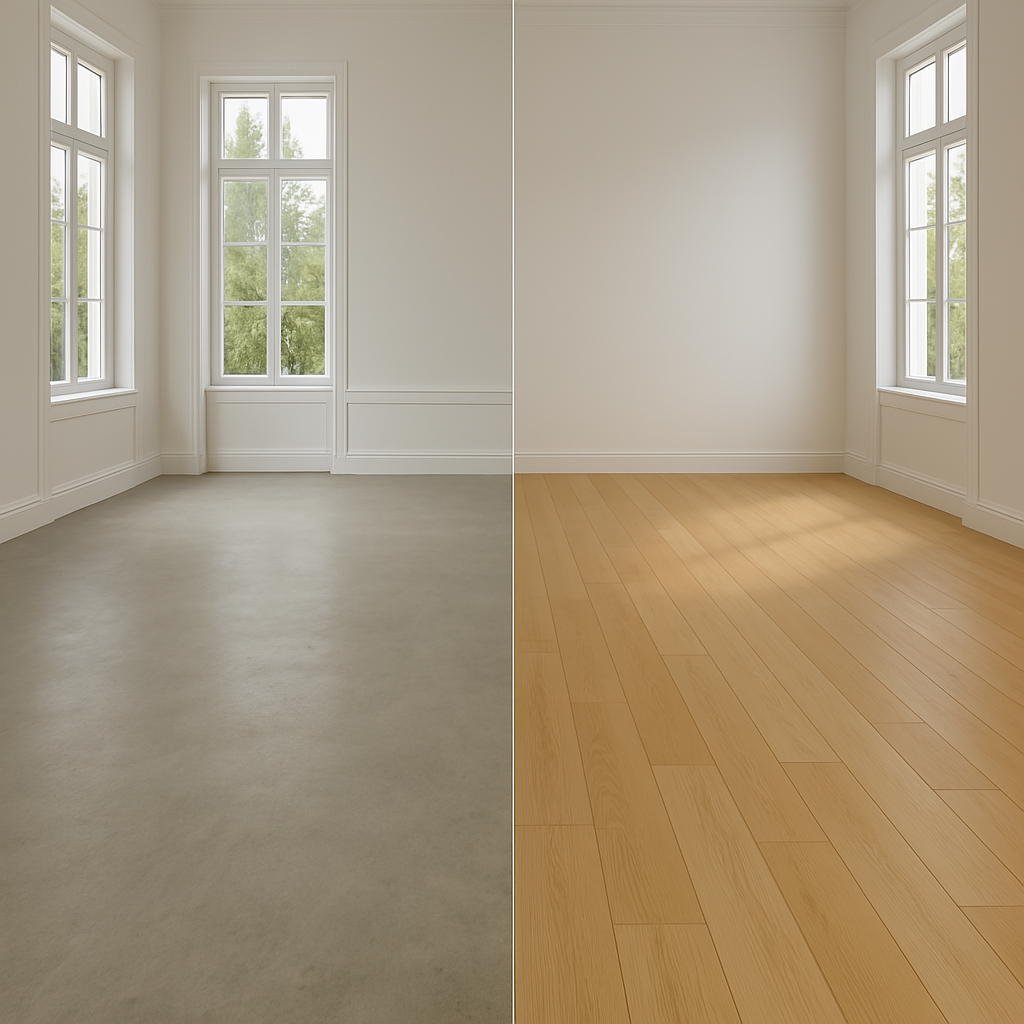
Choosing the right flooring for your space is crucial, especially regarding durability. Concrete slabs and timber flooring are popular options, each offering unique advantages. But which one truly stands the test of time?
In this article, we'll dive into a detailed comparison of concrete slabs vs. timber flooring, focusing on factors like durability, maintenance, cost, and more. By the end, you'll have a clear understanding of which material is the best fit for your needs. Let's get started!
Timber flooring is a natural flooring material made from solid wood or engineered wood products. Known for its aesthetic appeal, it brings warmth, texture, and a timeless charm to any space.
Solid timber floors are made from a single piece of wood, offering strength and durability, while engineered timber consists of layers of wood, providing stability in various environments. Timber is also a sustainable option when sourced responsibly, with FSC certification ensuring environmentally friendly practices.
A concrete slab is a solid, flat surface made from poured concrete, commonly used as a foundation for buildings or floors. Concrete slabs are known for their strength and durability, offering excellent support and long-term stability.
They are typically reinforced with steel bars or mesh to increase their load-bearing capacity and prevent cracking. Concrete slabs are resistant to moisture, fire, and pests, making them an ideal choice for areas prone to these elements.
Concrete slabs can be used in various thicknesses, from ground-level foundations to elevated floors, for different applications.

Concrete slabs and timber flooring each offer unique advantages. This comparison covers key factors like maintenance, cost, aesthetics, and environmental impact to help you choose the right option for your space. Here's a quick overview of their differences.
Concrete slabs are highly resistant to pests and moisture, making them an ideal choice for areas prone to damp conditions, such as basements. They are impervious to termites and do not absorb water.
In contrast, timber flooring is more vulnerable to moisture, which can cause warping, swelling, or mould growth. Timber can also attract pests like termites if not properly treated or maintained, making concrete a better option for areas with higher moisture exposure.
Concrete slabs are efficient at absorbing and retaining heat, which can help regulate indoor temperatures by staying cool in summer and warm in winter. However, they tend to have lower natural insulation properties and may require additional treatments, such as underfloor heating.
Timber flooring offers better natural insulation, helping to maintain a comfortable indoor climate. It reduces the need for additional heating or cooling, making timber more energy-efficient in most home environments.
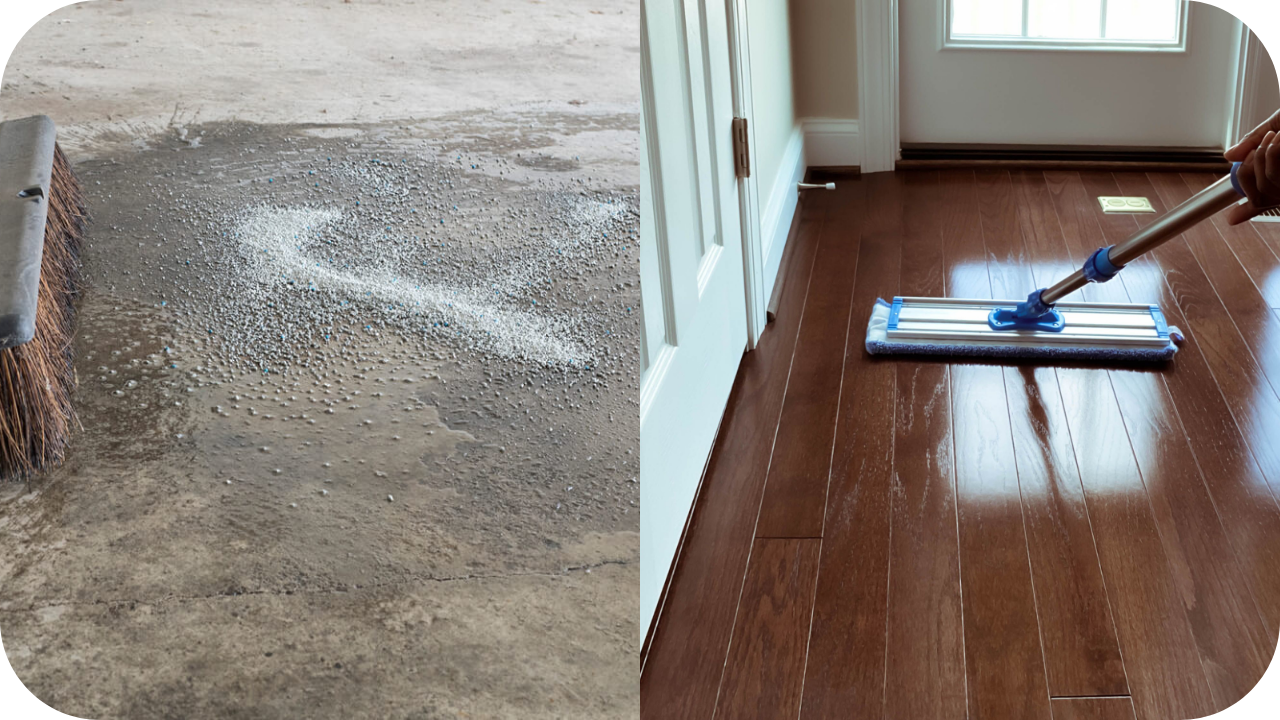
Concrete slabs are relatively low-maintenance, requiring only regular sweeping and occasional sealing to protect against stains and damage. They are naturally resistant to moisture, stains, and scratches.
In contrast, timber flooring demands more upkeep, including sanding, polishing, and resealing to protect against wear, moisture, and scratches. Timber can be easily damaged by environmental conditions, making it more labour-intensive to maintain compared to concrete slabs.
Timber flooring, due to its natural composition, absorbs sound more effectively. This makes it an ideal choice for multi-storey homes or apartments, where soundproofing between floors is essential to reduce noise transmission.
Concrete slabs are known for their durability and ability to block sound, but they can create a more echoey environment due to their solid, hard surface. In areas where noise reduction is important, additional measures like carpets or rugs may be necessary.
Concrete slabs offer cost-effective benefits over time due to their durability and low maintenance. While installation costs can vary, the lack of regular upkeep and replacement costs makes concrete a long-term investment.
Timber flooring, however, may have a higher upfront cost, especially for high-quality wood. Additionally, timber flooring requires ongoing maintenance, such as sanding and resealing, which can add to its total cost over the years.
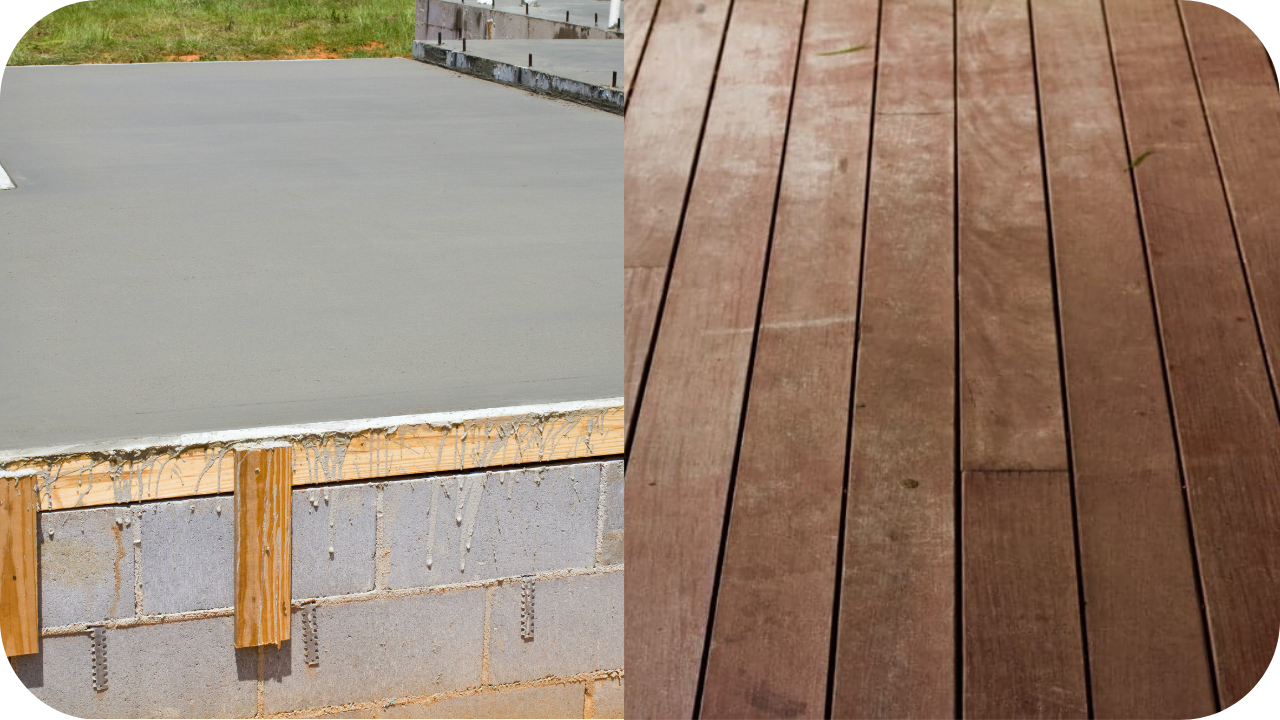
Concrete slabs are known for their exceptional durability. They are resistant to moisture, fire, pests, and heavy impacts, making them ideal for high-traffic areas and environments prone to wear and tear.
Timber flooring, while durable and properly cared for, is more susceptible to moisture damage, scratches, and fading.
Concrete production has a significant environmental impact due to high carbon emissions from cement manufacturing. However, concrete can be made from recycled materials, which helps reduce its environmental footprint.
Timber flooring, when sourced responsibly, such as FSC-certified wood, is a more sustainable option. It is biodegradable and renewable, but deforestation remains a concern, meaning sustainable sourcing practices are essential for ensuring timber’s environmental viability.
Concrete slabs can add value to properties, particularly in commercial or industrial spaces where durability and low-maintenance flooring are essential. However, timber flooring is often more desirable in residential properties, especially in high-end markets.
Timber’s classic appeal, warmth, and aesthetic charm can make a property more attractive to potential buyers, potentially increasing resale value. A well-maintained timber floor can significantly enhance a home’s overall appeal and market value.
Concrete slabs offer a modern, sleek aesthetic that suits industrial and minimalist designs. Their versatility allows for various finishes, such as polished, stained, or textured, to match different styles.
On the other hand, timber flooring adds a natural warmth and elegance to any space. The unique grains and colours of wood create an inviting atmosphere, making timber ideal for traditional or rustic interiors where comfort and style are key.
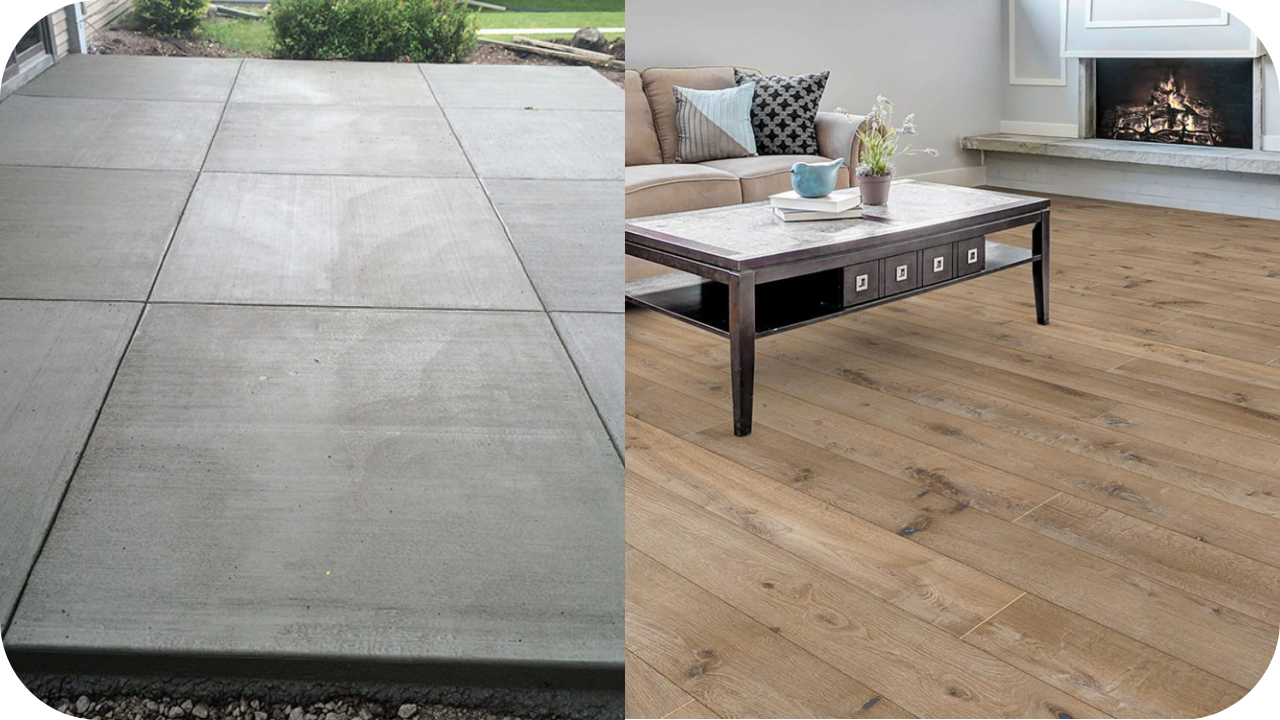
Concrete slabs and timber flooring offer distinct advantages When choosing the most durable flooring for your home. Concrete slabs are the more durable, especially in high-traffic areas or environments prone to moisture.
Concrete is resistant to damage from water, stains, and heavy impacts, making it ideal for basements, kitchens, and bathrooms. With minimal maintenance required, concrete floors can last for decades without significant wear.
However, timber flooring offers durability when properly cared for. While it requires regular maintenance to prevent scratches, moisture damage, and fading, high-quality timber can withstand years of use. It’s particularly suited for living areas where aesthetics and warmth are important, although it may not hold up as well in high-humidity environments compared to concrete.
Ultimately, the right flooring depends on your home’s specific needs. Concrete slabs provide unmatched durability in demanding conditions, while timber flooring excels in areas prioritising warmth and elegance with proper care.
Regarding flooring that combines durability, style, and expert installation, Urban Pour stands out as the go-to choice for concrete slabs and timber flooring. Here’s why homeowners and businesses trust us:
For durability, concrete slabs excel in high-traffic, moisture-prone areas, offering low maintenance and long-lasting performance. Timber flooring requires more care and adds warmth and elegance to any space. Choose the option that aligns with your needs. Contact Urban Pour today for expert installation and durable flooring solutions tailored to your home or business.
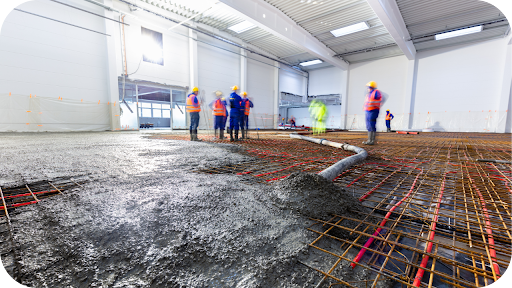
Choosing the right concrete contractor in Melbourne ensures strength, safety, and long-term value. Learn how Urban Pour delivers precision, quality, and trusted results on every project.
See more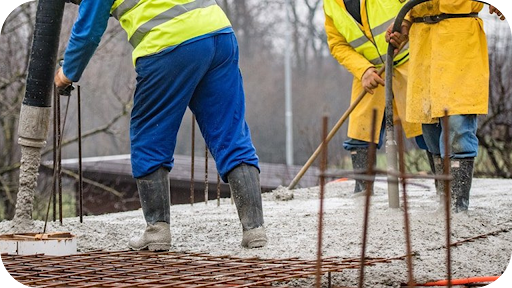
Concrete pumping gives Melbourne builders faster, cleaner, and safer pours. Learn why it’s the go-to method for efficient, high-quality concrete placement on any site.
See more
Residential concreting gives Melbourne homes lasting strength and modern appeal. From driveways to interiors, Urban Pour delivers durable, design-focused results built for beauty and longevity.
See more